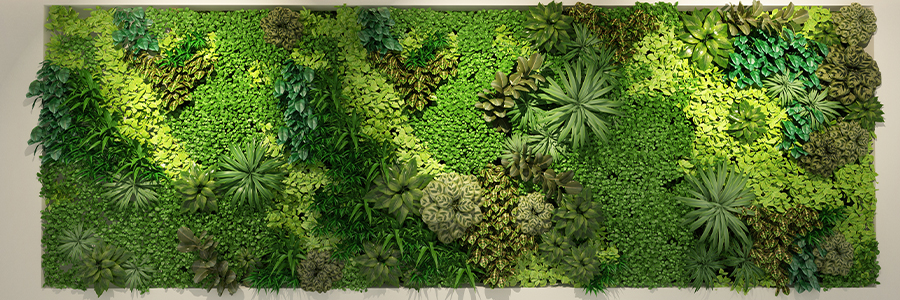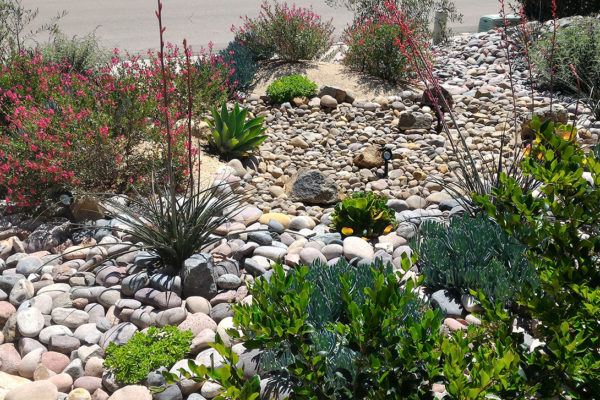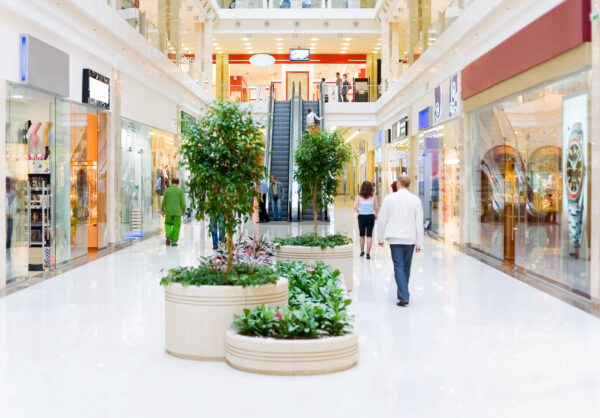
Sustainable water management means using water in a way that meets social, economic, and ecological needs without depleting limited resources that would compromise the needs of future generations.
Water is life, critical to human survival. With global population exploding from 1.5 billion to nearly 8 billion in just the last 100 years, freshwater withdrawals have increased an astounding 600 percent. Now, more than ever before, we must be mindful of the ways we are using our planet’s most precious, fast-dwindling resource— not only at home, but how we balance water sustainability in the workplace.
Integrating nature into the workplace environment is called biophilic design—designing human-nature connections in the workplace by bringing nature inside. Humans are naturally drawn to nature. Its lush, verdant serenity can be beneficial to our health, improve mood, reduce stress, and instill within us a feeling of well-being. Green plants also filter and purify the air we breathe, absorb sounds to reduce noise around us, and overall, can help to increase productivity in the workplace.
Living Green Walls are one way nature can be integrated into the workplace environment, while still being mindful of managing water use sustainably. Green Wall systems are also designed to deliver just enough water to each plant, which prevents overwatering—again, saving water.
A Green Wall is a vertical plant wall system covered with living plants growing within the structure. Plants growing in the Green Wall must be able to access water to thrive.
Green Walls can use recirculated water pulled from a reservoir tank below the living wall with a motorized pump, and dispense water through a drip system at top of the wall, which significantly reduces water usage.
Another method of keeping plants in a Living Green Wall watered would be manually. This method requires more time, labor and commitment to keep plants within the wall hydrated and healthy. Also, watering by hand could result in damaging plants, as there’s always the risk of over-watering or under-watering.
A green wall system that uses recirculated water will obviously require less water input. Drip irrigation uses a small amount for each watering, delivered to each plant in the living wall. Drip irrigation can even be zoned specifically to deliver different amounts of water to different plants, based on specific plant requirements– such as tropical plants needing more water than succulents.
Because plants growing in vertical Green Walls are not able to root deeply into soil for water, they are at high risk of drought. Gravity in vertical Green Walls also makes retaining water for plants as it trickles down more difficult. If plants in the Green Wall suffer from water shortages too long, they’ll shrivel up and die, so monitoring soil moisture is paramount.
A very efficient way of monitoring soil moisture in a Living Green Wall is with soil moisture sensors.
Soil moisture sensors know precisely how much water is in the Green Wall’s substrate, and will electronically communicate with the irrigation system when plants require irrigation to stay healthy, and when to start watering to prevent them from wilting.
Baseline’s 3-inch, compact soil moisture sensor is ideal for Living Green Walls. Capable of measuring volumetric soil moisture changes of less than 0.1%, ultra-sensitive biSensors will electronically send readings to the irrigation controller for the best possible irrigation decisions to keep Green Walls happy and healthy.
Bringing the lush peace and serenity of nature into the workplace with Living Green Walls can benefit health, fill one with a sense of well-being, and increase productivity– all while still being mindful of water sustainability for future generations to come.

Blog: Goodbye Non-functional Turf, Hello Sustainable Landscaping
Transitioning from non-functional turf to sustainable landscaping with native, drought-resistant plants can significantly conserve water and enhance environmental resilience.

HydroPoint Named a Top Smart Water Management Solution Provider
HydroPoint earns top recognition for revolutionizing water management with smart solutions, eliminating waste ‘one drop at a time.’

Smart Water Management Helps Leading Retail Company Achieve ESG and Sustainability Goals
Discover how a leading retail company met its ESG sustainability goals by implementing smart water management strategies, resulting in significant water savings and improved efficiency.

